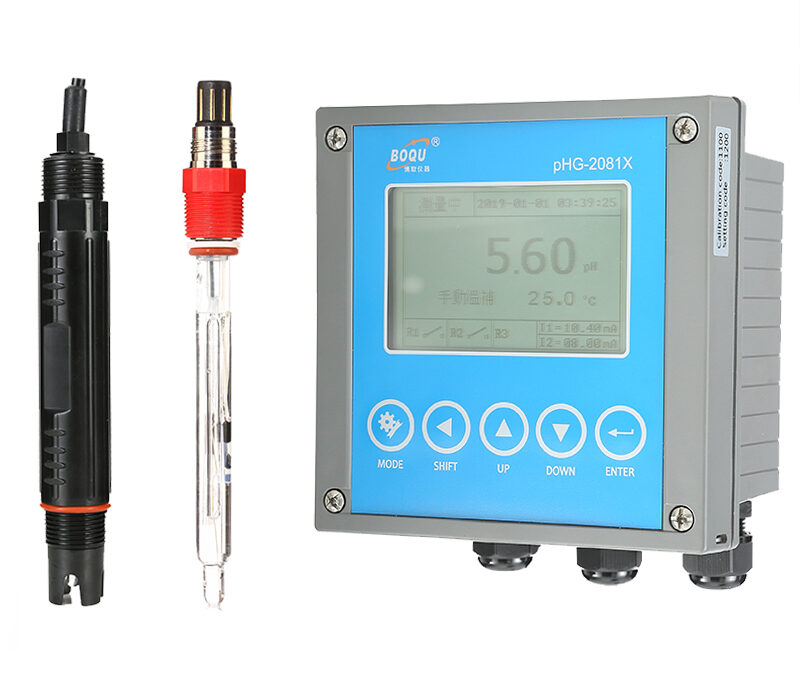
A PH Analyzer is a device used to measure the acidity or alkalinity of a solution. Alkaline solutions are far more preferred for most laboratories than alkaline solutions. It also helps to determine the concentration of dissolved inorganic substances such as salt, air, and water. PH testing strips can be attached to your analysis instrument to read the result of your test.
An example of a PH sensor is a pH sensor attached to a gas analyzer, or pH monitor. A pH analyzer usually consists of a probe, sensor and process adaptation, coupled with an external program for co-located pH measurements. Most pH analyzers andORP electrodes that utilize electronic Intelligent Sensor Management (ISM) technology to help reduce laboratory maintenance through automated, integrated diagnostics.
The process of PH measurement involves two independent steps. The first step is the analysis of the sample and the second step is the calibration of the analyzer. It is important for a PH sensor to perform both tasks accurately. On-line calibration services ensure this critical functionality.
Calibration ensures that your analyzer is consistently accurate with high-frequency resolution. It ensures that the PH values derived from the measured samples are accurate to a degree. There are many different methods for calibration and it depends on the type of analyzer. Some of these methods include:
There are a number of on-line calibration services that help you obtain the optimal PH levels in a lab or work area. These services utilize sensitive, state-of-the-art instruments and software. These measurement and analytical instruments to measure volatile organic compounds (VOCs), temperature, pH, and airborne pollutants. They also provide other key benefits including total dissolved solids, peak flow, trace chemicals, evaporation, absorption, and turbidity. They provide technical support to help you properly use your analyzer and determine its suitability in your specific applications.
On-line calibration services provide several advantages over the traditional reference electrodes. They are environment-friendly, provide precise calibration constant values, are reliable, and provide higher resolution than traditional sensors. PH level determination with on-line data collection depends on four factors. These factors are the physical properties of the sample, its concentration or density, the calibration constant, and the reference electrodes.
A properly calibrated analyzer can determine the concentration of VOCs in the air or water at a particular temperature. The density of the sample determines the PH value of that sample. A reference electrode is used as a control, determining the PH level of the reference water. The fourth factor, the total dissolved solids in the sample, is determined by the method of solution. The portion of the reference electrode’s solutions to the sample’s solutions determines the level of dissolved solids in the sample.
PH analyzers offer several advantages over existing pH meters, some of which are discussed below. First, PH level measurements are faster and more accurate than existing measurements. Second, with on-line pH measurements, changes in concentrations are constantly recorded in real time. This enables a continuous monitoring of samples at predetermined concentrations over time. Finally, pH levels can be automatically programmed for preventive maintenance. This is accomplished by frequently measuring and maintaining predetermined pH levels in supply systems.
Most on-line PH meters provide automatic calibration using either electronic sensors or an external calibration kit. These kits are available from several suppliers and are simple to install. The calibration process is simple; a plastic disc is placed atop the meter’s glass cover. A laser is then used to imprint a one-step, preset calibration pattern on the disc.
There are two types of PH analyzers: physical and biological. Physical analyzers use electrodes to determine the density of a sample or various components. Therefore, they must be connected directly to a source of water. However, they have no mechanical parts, so there is no need for regular maintenance or calibration. Biological analyzers, on the other hand, are connected to external sources of water and chemicals. They must undergo manual calibration and maintenance on a regular basis.
Many on-line measurements providers offer predictive maintenance plans. PH analyzer owners can purchase a sensor measurement package that will not only automatically deliver scheduled maintenance tips via email but also perform automatic PH analysis tests each time a new sample is taken. This greatly reduces the owner’s required number of visits to the laboratory, as well as unnecessary staff travel time.
PH Analyzer and other orp measurements devices are available at many on-line measurement providers’s websites. PH Analyzer packages and orp measurement systems are sometimes available with special options like a glass panel with a sensor display, wireless remote control, built-in battery charger, and on-site technical support. In addition, some suppliers offer low cost training for their customers to help them become proficient in the use of their analyzers.
